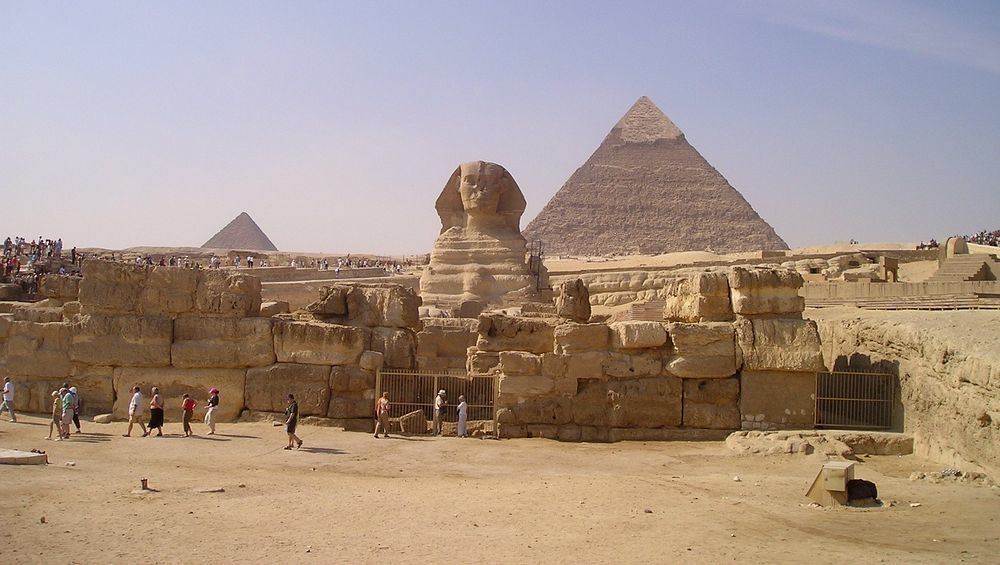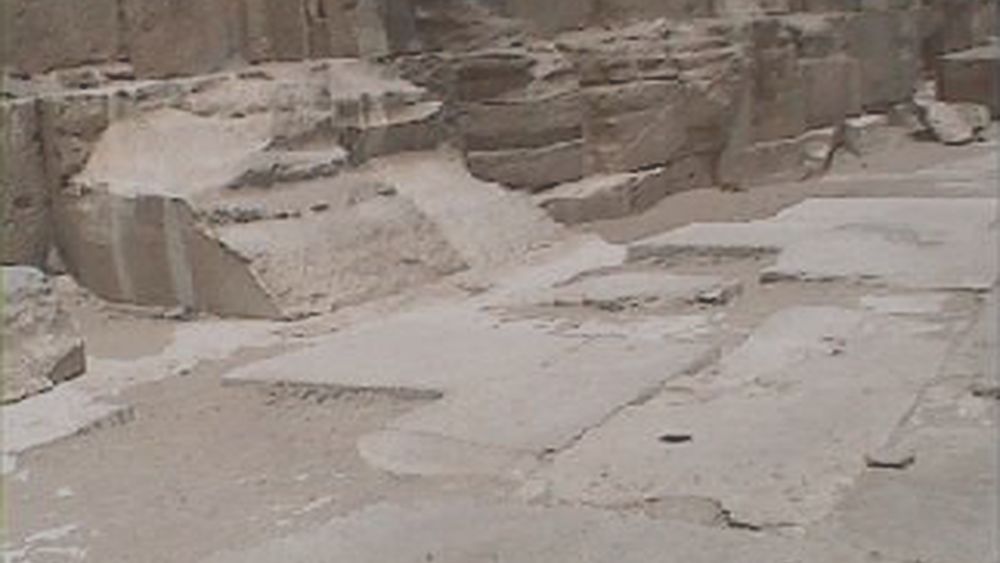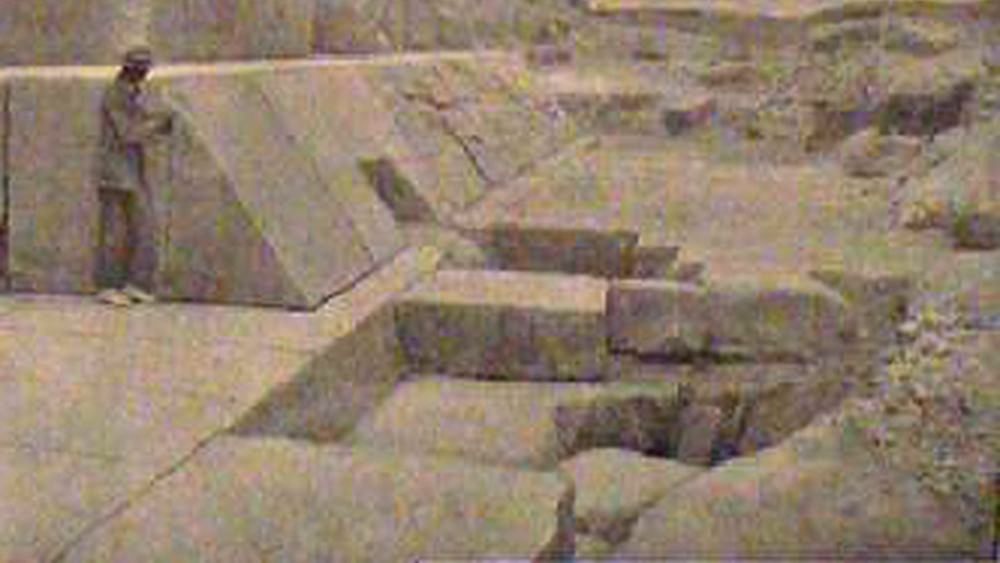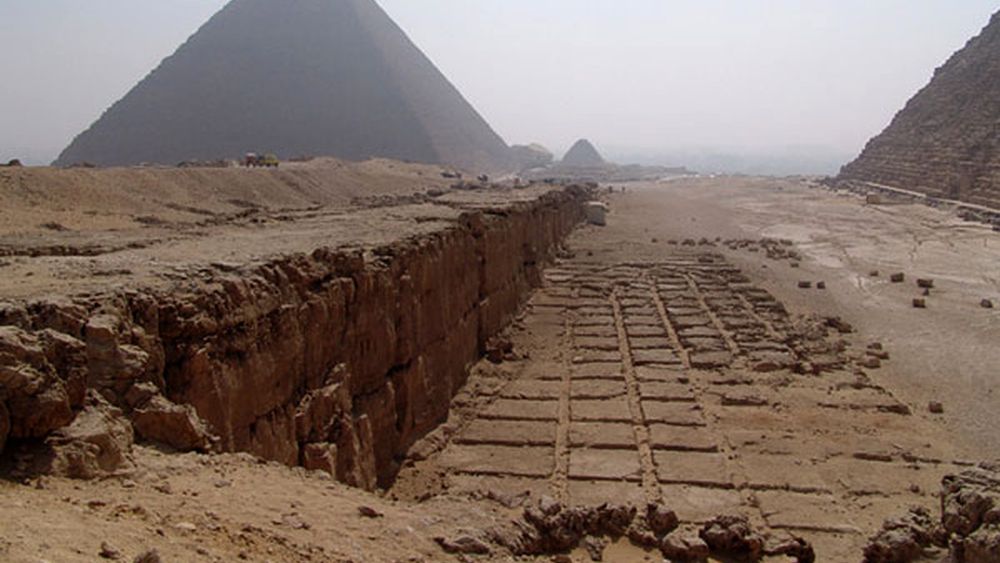The Giza plateau is of great scientific interest because of the presence of the famous three great pyramids of Egypt, including the two largest of all the ancient Egyptian civilization, that of Khufu and that of Khafra. One of the most interesting curiosities is to discover how the ancient Egyptians were able to build them, when at the time they had virtually none of the technologies you have today.
Construction on the Giza Plateau
And to begin with, be aware that before the works the Giza Plateau was leveled, entirely. The idea was to make it easier to extract the blocks from the ground, polish them, and transport them to the site. It was therefore necessary to make a number of adjustments before even starting the construction of the first pyramid.
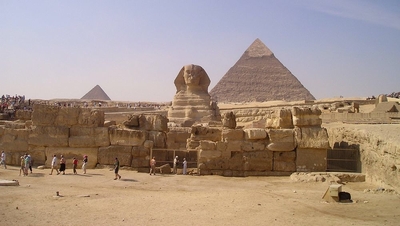
The pyramids and the sphinx
Development of the Giza plateau
Here we talk about the arrangements made during the time of the pharaohs of the Fourth Dynasty, not those made in modern times. Indeed, since the plateau of Giza is only a vast desert and stony area, how could the ancient Egyptians to launch the constructions that are still there today?
They simply laid out the area so that they could work safely and easily. The main development was the paving of the plateau. It is unknown nowadays but it is a reality, the Giza plateau was largely paved before making the pyramids and temples there.
The paving method was simple. First of all it was necessary to level the board, which was done with men's tools. We imagine the amount of work just to achieve a perfectly flat plateau. Then they cut blocks of limestone about 50 to 70 cm side and 20 cm high, often rectangular blocks that were placed on the ground, forming a beautiful pavement. Here too, one can well imagine the quantity of materials and work that these preparatory phases generated for the construction of the Egyptian pyramids.
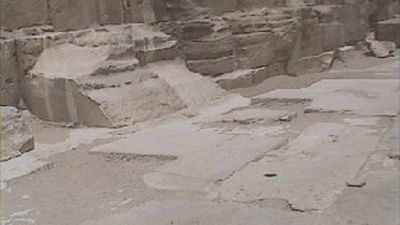
The pavement of the Giza plateau
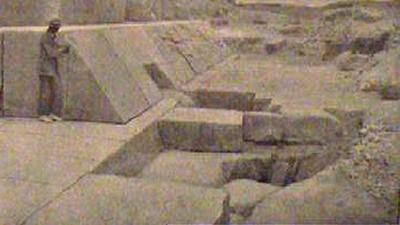
The pavement in 1910
Origin of stones
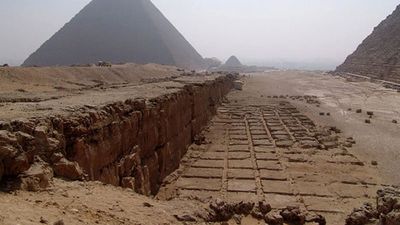
Stone carry
The study of a monument, whatever it is, often leads us to ask the question of the origin of the materials used. Often too, this origin gives pride to the imagination, and everyone is scrambling to claim the supply of materials for a site. So do we discover that more than 20 careers claim the supply of stones to the construction of the pedestal of the Statue of Liberty, in New York ... This digression has no other purpose than to highlight the fact that sometimes the truth is commonplace and therefore must be abandoned the idea of a particular origin to the materials of a building, however important it is.
This is exactly the case here, as the stones used in the construction of the three Giza pyramids come, for the most part, from the Giza plateau. Indeed, the ancient Egyptians had discovered the phenomenon of anticlinal folds, namely the natural fracturing of the rock along parallel straight lines, forming pre-cuts of blocks. It was thus easier to extract these blocks, and there was no question to be asked about the transport of blocks that could have come from distant quarries. The stones used to build the Giza pyramids come from local quarries, they were extracted on site.
To be exact several kinds of stones were used for the pyramids. If the limestone of Giza forms the vast majority of the blocks used, the king's room, on the pyramid of Khufu, is entirely in granite, as well as some other elements. We also used will, which is a stone made from naturally compacted sand.
Order of construction
The necropolis of Giza seems to have always been occupied only by these three great pyramids ... But yet, it contained many other things that were built during the first Egyptian dynasties, little by little.
First of all it is necessary to know that the plate of Giza was used since the first dynasty and by the following two, but in a punctual way, by period. Thus, 39 tombs were discovered 1.5 km south of the site of the pyramids on a place occupied during the third dynasty, proof of the interest of this plateau from the earliest times of the Egyptian civilization. Then came the time of the reign of Khufu. This pharaoh made the Giza plateau the site of his royal burial. Once completed, the plateau thus hosted its complete funeral complex, with the two temples, the pyramid, the pavement, and.
The plateau remained so, with worship in Khufu practiced in the lower temple, until Khafra, son of Khufu and successor of Djedefrê, decided to use this place to make his own funerary complex. We do not know it was during the works, or after, or even before, but it seems that it was Khafra who built the great Sphinx and its temple, two magnificent works sometimes attributed to Khufu. It was also under Khéphren that the village of workers was built, a place where workers lived on the various construction sites, both on-going and on-going.
Finally, when Mykérinos ascended the throne, he also chose Giza as a place of burial, hence the last construction on this plateau: The Pyramid of Menkaure.
In order, the plateau of Giza welcomed therefore: The tombs of previous dynasties, the pyramid of Khufu, that of Khafra, the Sphinx, the village of workers and the pyramid of Menkaure.
Construction of pyramids
How did the Egyptians build the pyramids? This is the big question we ask ourselves when we talk about this emblematic site of ancient Egypt. The answer is not obvious because today we still do not know how they were made. We have some assumptions, of course.
These assumptions are given here: Learn more about the construction of the pyramids of Egypt .






